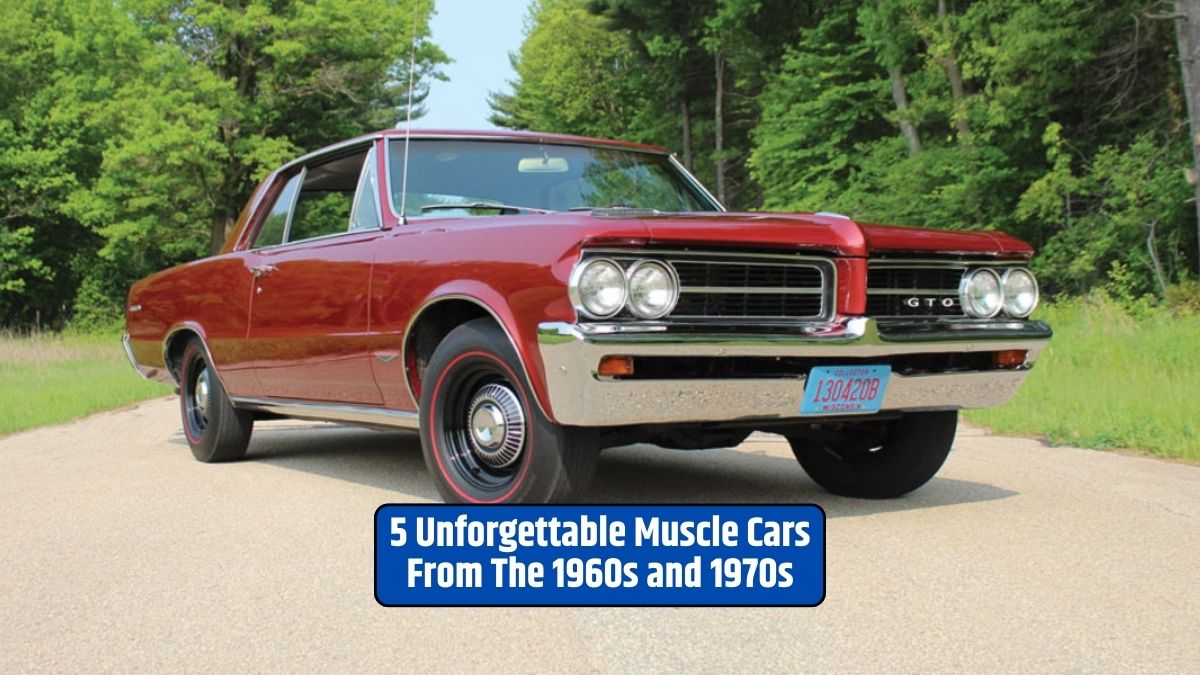When it comes to classic American muscle cars, the 1960s and 1970s were the golden era. These decades gave birth to some of the most iconic and powerful vehicles in automotive history.
In this article, we’ll take a nostalgic journey through time and explore five unforgettable muscle cars from the 1960s and 1970s that left an indelible mark on the world of automobiles.
1964 Pontiac GTO
The Pontiac GTO, often referred to as the “Goat,” is widely considered the first true muscle car. Introduced in 1964, it was a performance-oriented version of the Pontiac Tempest.
With a V8 engine under the hood, it delivered an impressive 325 horsepower and a 0-60 mph time of just under 7 seconds. The GTO set the standard for what a muscle car should be, and it’s a legend that lives on.
1969 Dodge Charger
The 1969 Dodge Charger is an icon in its own right, but it gained everlasting fame as the car of choice for the “Dukes of Hazzard’s” “General Lee.”
With its aggressive design and powerful engine options, including the legendary Hemi V8, the ’69 Charger was a force to be reckoned with. It left an indelible mark on popular culture and is still celebrated today.
1970 Chevrolet Chevelle SS
The 1970 Chevrolet Chevelle SS is often regarded as one of the most beautiful muscle cars of all time. With its sleek, aerodynamic lines and a range of big-block V8 engines, the Chevelle SS was a powerhouse.
The LS6 engine option, rated at 450 horsepower, made it one of the fastest cars of its time. Its combination of style and power is a testament to the muscle car era.
1971 Plymouth Hemi ‘Cuda
The 1971 Plymouth Hemi ‘Cuda is the stuff of legends. With a Hemi 426 V8 engine producing 425 horsepower, it was the king of the streets. The ‘Cuda’s distinctive styling and raw power made it a standout in the muscle car world.
Today, it’s one of the most sought-after collector cars, with some rare models fetching astronomical prices.
1977 Pontiac Firebird Trans Am
While the late ’70s were a time of declining muscle car performance due to stricter emissions regulations, the 1977 Pontiac Firebird Trans Am managed to capture the spirit of the era.
It became a superstar thanks to its role in “Smokey and the Bandit” alongside Burt Reynolds. With its unmistakable black and gold livery, the Trans Am was an automotive icon and helped keep the muscle car flame burning during challenging times.
Conclusion
The 1960s and 1970s produced some of the most unforgettable and legendary muscle cars in history. These vehicles weren’t just about power and performance; they were symbols of a rebellious spirit and a love for the open road.
Their influence continues to be felt in the automotive world, and they hold a special place in the hearts of enthusiasts and collectors alike.
FAQs
What defines a muscle car?
Muscle cars are typically mid-sized, two-door, rear-wheel-drive vehicles with high-performance V8 engines designed for straight-line acceleration. They often feature aggressive styling and are known for their power and speed.
Why are muscle cars from the ’60s and ’70s so popular?
Muscle cars from this era are beloved for their timeless design, raw power, and cultural significance. They represent a bygone era of American automotive innovation and freedom.
What happened to the muscle car era in the late ’70s and early ’80s?
The muscle car era faced challenges due to stricter emissions regulations and fuel economy standards, leading to a decline in performance. Many models saw reduced horsepower and performance during this time.
Are classic muscle cars a good investment?
Classic muscle cars, especially rare and well-maintained models, can be excellent investments. Their value tends to appreciate over time, making them sought-after by collectors.
What is the most expensive muscle car ever sold at auction?
The 1971 Plymouth Hemi ‘Cuda convertible is among the most expensive muscle cars sold at auction, with some fetching prices exceeding several million dollars.






